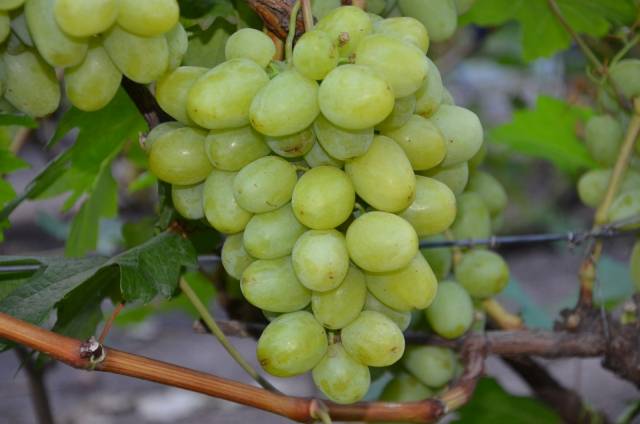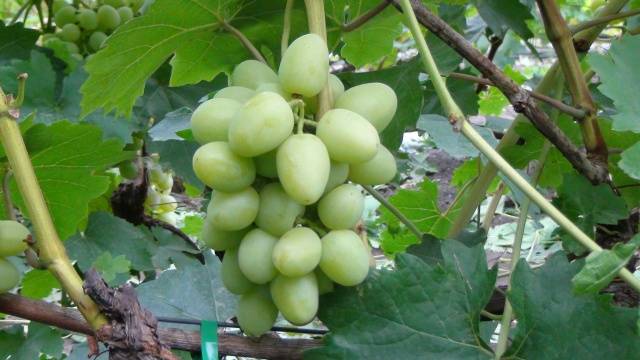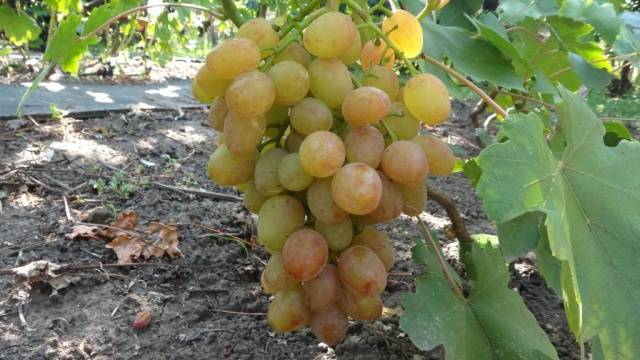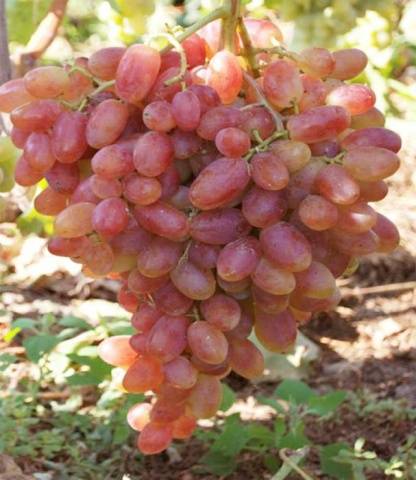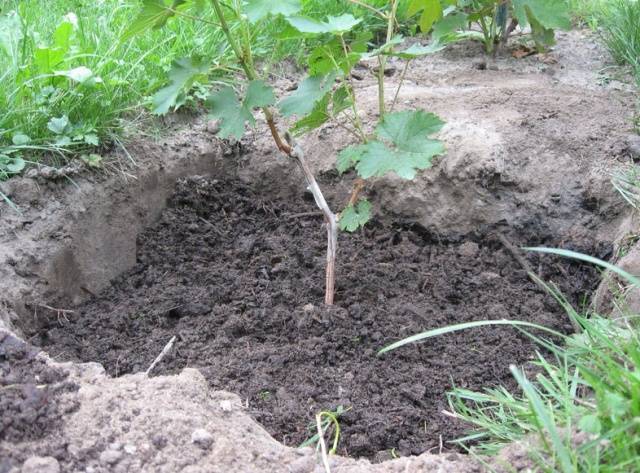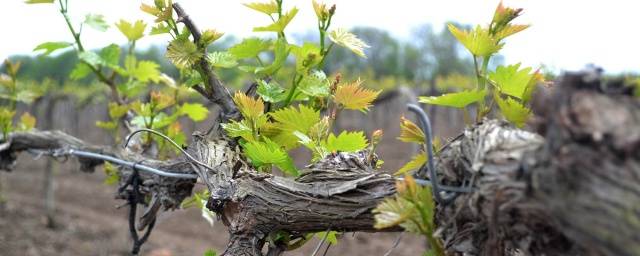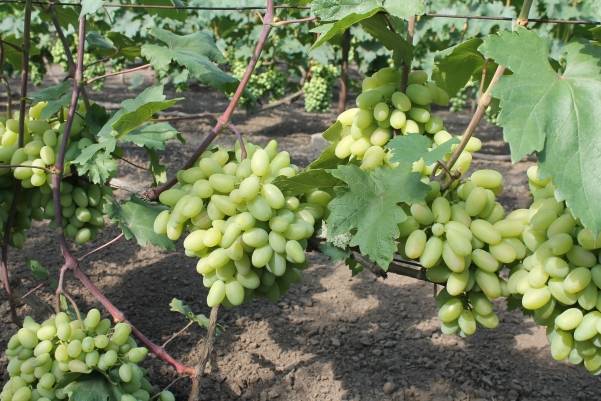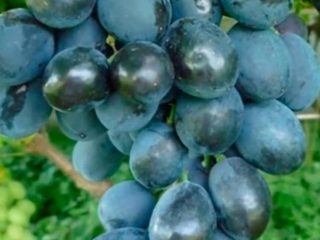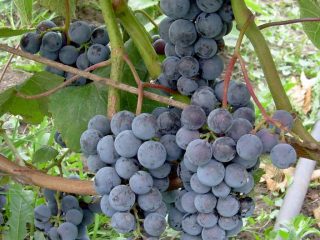Content
At the mention of grapes with the name Daria, Dasha and Dashunya, it may seem that the same variety is named with variations of this female name, but in reality this is not so. it 3 different hybrid forms of grapes of different origins, sponsored by different people. Basically, they differ from each other in the color of the berries, to a lesser extent - in other characteristics. It is easy to notice from the descriptions and photos of these grapes.
Breeding history
What is the reason for such a variety of varieties with similar names? It's all about the process of breeding plants with resistant varietal traits. It cannot be fast by default and takes quite a long time. Over the years of breeding, the team of breeders selects the best specimens of hybrid forms, studies their inherent new characteristics and the degree of their inheritance, and conducts tests in practice. Moreover, prototypes can also fall into the gardens of amateur winegrowers, who also contribute to the work on the creation of a new grape variety.
By the time the variety is entered into the State Register of Breeding Achievements, it may happen that several hybrid forms will be bred, differing from each other in many ways. Up to this point, they can exist under similar names for many years.
Daria grapes
The Daria grape variety is a product of the breeding work of V.N.Krainov. In fact, this grape cannot yet be called a variety, it is a hybrid form, as it is being tested. Daria grape belongs to the early varieties. Its berries ripen 105-115 days after bud break. Parental forms for him were selected varieties Kesha and Friendship.
Description of the grape variety Daria and his photo:
- bush with strong growth, reaches a height of 2.5 m;
- forms long shoots with 6-8 eyes;
- the vine ripens well;
- the leaf is dark green, with deep grooves along the edges;
- flowers are bisexual;
- the bunch is large, reaches a mass of 0.7 to 1 kg, medium density, on a medium-sized comb, the shape of the brush is conical;
- berries are ovoid, from large to very large, homogeneous in size, the weight of one berry is 12-14 g;
- the skin is light, with a slight waxy bloom, green-yellow in color, amber in fully ripe berries;
- the skin is medium-dense;
- the pulp is juicy, fleshy, there is a pronounced nutmeg taste;
- there are few seeds in the berry - 1-3 pcs. and they are small.
The berries of Daria grapes, according to the reviews of practicing gardeners, are not prone to cracking, are not susceptible to peas and wasps attack. Due to the dense skin of the berries, the brushes perfectly tolerate transportation and can withstand storage for up to 1 month.
This only confirms the excellent breeding work of the originator V.N.Krainov, who set himself just such a task.
The resistance of the vine to these formidable fungal diseases is determined on a 5-point scale. If a variety gets 5 points, it means that it has the lowest degree of immunity against diseases. The ideal score is 1 point, but so far the breeders have not been able to achieve such "health" of the vine, therefore 2-2.5 points is considered a normal indicator.
Resistance to fungal diseases Daria received grapes from both of his parents - varieties Kesha and Druzhba.In addition, from the first of them, he inherited early maturity in combination with yield, large brush and berries, outstanding taste characteristics of this famous nutmeg variety (tasting score - above 9 points), increased sugar content, skin density, and frost resistance of the vine.
From Druzhba varieties Daria got early maturity, strong growth of the bush, high consumer qualities (the suitability of berries for fresh consumption and the production of sparkling wine from them), frost resistance (above average, bushes without shelter can withstand temperatures down to -23 ° C).
Feedback
Dashenka grapes
Dasha was obtained at the site of an amateur breeder Kapelyushny V.U. Differs in a very early (100-105 days) ripening period. Ripe brushes can be cut off in August.
Description of the grape variety Dashenka and his photo:
- vigorous bush;
- the bunch is heavy and dense, weighing from 0 to 1 kg, with numerous berries;
- the berries are large, the weight of one reaches 12-16 g;
- the color of their skin is yellow-pink;
- the pulp is juicy, dense, crunches pleasantly;
- nutmeg taste is harmonious, aroma is pronounced.
Dashenka grape vine is distinguished by its early ripening and good resistance to freezing (up to -24 ° C). There is no need to cover her.
Feedback
Dashunya grapes
Another grape with the name Dashunya is the result of the selection work of the amateur winegrower Vishnevetsky N.P. This new hybrid form is also of an early ripening period (115-120 days). The breeder chose three varieties as parental forms for her: Kesha, Rizamat and Radiant Kishmish.
Description of grape variety Dashunya and photo:
- the bush is distinguished by strong growth;
- ripening of the vine is good;
- has a female flowering type;
- a large bunch has a conical shape, medium dense, weighing 1.5-2 kg;
- pink berries, weighing 12-15 g, fleshy;
- the taste is excellent, nutmeg.
According to the reviews of many gardeners, the grapes of Dashunya grapes firmly adhere to the stalk, even with an excess of moisture, they do not burst and are not affected by gray rot. Pollination is good, no pollination is observed. Another advantage of this amateur hybrid form is that the bunches perfectly tolerate transportation over considerable distances. The vine is resistant to mildew and powdery mildew infections (the degree of stability is 2.5-3 points). The frost resistance of the hybrid form of Dashunya grapes is increased (up to - 24 C).
Feedback
How to grow grapes
Early-ripening grape varieties, which include all 3 hybrid forms, are economically profitable to grow, since early production is in demand in the market and has a rather high price, as well as effective from the point of view of agricultural technology - early ripening of the crop minimizes the risk of fungal infections of the bunches.
Before planting a grape bush, you need to choose a suitable place for it on the site.It must necessarily be sunny, since for the rapid ripening of berries this plant needs the light and heat energy of the sun. It is also necessary to take care of protection from the wind - it is advisable to plant a bush near the southern wall of a building or a fence. The soil for the vine should be light, fertile, airy, well-drained.
The method of planting a young grape seedling depends on the type of soil on the site. Usually, on sands and sandy loams, plants are planted in trenches, and on loams and clays, and even with a close occurrence of groundwater, in raised ridges.
It is necessary to place seedlings on the plot correctly. Bushes of table varieties need a certain area of nutrition, so you need to leave enough space between them. It is necessary to plant grapes Daria, Dasha and Dashunya according to the scheme:
- between bushes in a row - at least 1.5 m;
- between the rows - 2-2.5 m.
It is better to arrange seedlings in planting holes not vertically, but laying them as low as possible, at the maximum possible angle. This will further enable the vine to mature better.
It is better to cover young grape seedlings in the first 1-2 years of growing season for the winter, despite the fact that they are distinguished by good frost resistance. It is especially necessary to do this in the northern regions in order to protect the fragile vine from freezing. It must be removed from the trellis and hidden under a reliable covering material. Under the bottom, you can put boards or spruce branches, and on top cover the shoots with a layer of agrofibre, film, roofing material, etc. You need to close it loosely and leave small gaps for ventilation.
It is necessary to water the bushes regularly only in the first year of their life, so that they take root well. For older grape plants, watering should be done 3 times per season:
- 2 weeks before flowering (it is better not to water later, because excess moisture can cause shedding of the color and delay the ripening of the expected harvest);
- after flowering (watering should be stopped when the berries begin to stain);
- water charging irrigation in late autumn.
Water should be poured not at the root, but in the aisles, or no closer than 0.5 m from the base of the bush. Sprinkling is not necessary: diseases develop faster on a wet leaf.
In this case, all green shoots will grow along their entire length, and not mainly from the upper eyes, which often happens with a vertical garter.
Darya, Dasha and Dashunya grapes should be pruned in a timely manner, but sparingly. In the first year, no pruning is carried out. On adult bushes, all stepchildren should not be cut off at once and the tops should not be cut off. After the procedure, overwintering buds can begin to grow on such plants, and this will significantly weaken them. The stepsons do not need to break out, but leave 1-2 sheets on them. Pruning is best done in autumn, after the grape leaves begin to crumble, and the night temperature drops to freezing temperatures. In the spring, pruning shoots is better on young bushes: an uncut vine tolerates the cold better than a pruned one.
It will take several years to form a grape bush. It can be grown in the classic way - on a trellis, or planted near a shed or small buildings so that it can braid them. From a powerful, matured vine, you can cut cuttings for propagation and thus increase the number of bushes of the variety you like in your area.
Conclusion
Hybrid forms Daria, Dashenka and Dashunya are an excellent choice for any amateur gardener who wants to get an early and high-quality grape harvest from his site.They are ready to show the gardener all their enormous potential, all that remains is to make an effort and help them in this.
